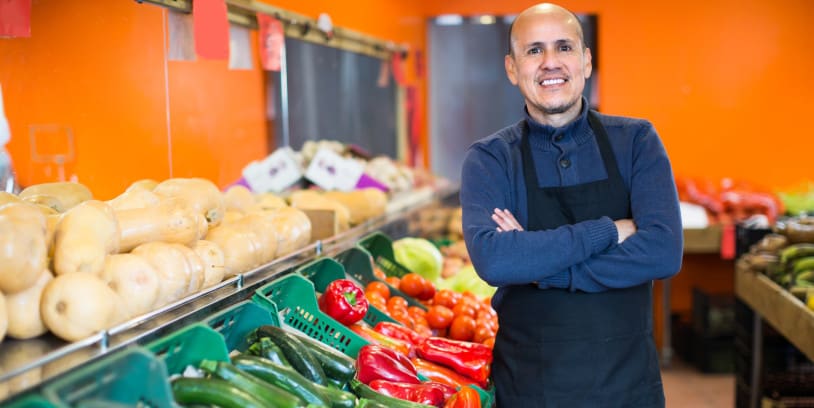The 2021 edition of the Independent Grocers Financial Survey, a joint study between the National Grocers Association (NGA) and FMS Solutions, found record financial and operational performance benchmarks in a banner year for the $253 billion independent supermarket industry.
In the fiscal year 2020, which ended on March 31, 2021, sales increased an average of 17% for many retailers, boosted by an increase in transaction size to an average of $31 and a significant upswing in online orders. While inflation was high, sales still gained 13.5% once adjusted for the price increases, said the NGA in a press release.
“All of grocery retail had record sales in 2020, but the pandemic brought consumers back to independent grocers in record numbers,” said Robert Graybill, FMS CEO and president. “Whether one-store operators or small regional chains, independent grocers did what they do best during difficult times: take care of their communities.”
Big contributors were dry grocery, dairy, frozen, and meat. The high demand drove an increase in inventory turns, reaching an average of 19.2 times per year and a decrease in shrink to 2.5%.
While hard-dollar expenses rose in wages/benefits and supplies, sales gains accelerated faster. This prompted a drop in total costs as a percentage of sales to 26.9%, down from 28.8% in 2019. “With continued elevated retail demand, the biggest competition now is not for the consumer dollar, but independents’ greatest asset: people,” Graybill added.
Hiring and retention are the top marketplace concern among independent grocers
Hiring during the pandemic is a challenge, according to 71% of independents, and 64% reported it hurt retention.
Independents had many COVID-19 related expenses, including enhanced cleaning, protection equipment for employees and customers, bonus, hero pay, overtime, and hiring and retention costs.
In all, independents managed to improve their margin to 28.4% across departments, with the most significant departmental increases by dry grocery, dairy, GM/HBC, and beer/wine/liquor. “The combination of high sales and better margins resulted in record net profits before taxes, at 5.02%, up from 1.05% in 2019,” Graybill explained.
Related Article: Todos Supermarket Owner Joins White House Roundtable on Supply Chain Challenges
Independents put the pandemic sales gains to practical use by reinvesting into the business, with 62% increasing capital expenses. Both store remodeling and new openings reached their highest levels in many years. Additionally, they improved their debt-to-equity ratio and paid down long-term liabilities.
The profit leaders, the top 25th percentile of independent grocers when regarding net profits before taxes, grew net earnings before taxes by 9.8% — twice the total average. Common traits among profit leaders include strong shrink, labor, margin, and expense management. The whole store gross margin among profit leaders is 1.6 percentage points higher than that of the pack.
While continuing to respond to a challenging external environment, independents also focused on reinvesting their record sales and profits into their stores, online capabilities, and people.
Based on the lessons derived from the profit leaders in prior-year studies, reinvesting in the business is key to future success.
“Alongside the important role in feeding America’s communities, the pandemic has illustrated the agility and resiliency of independent grocers,” said NGA President and CEO Greg Ferrara. “As the supermarket industry continues to navigate these changes, independent grocers are in a unique position to find innovative and creative ways to serve their customers better. The Independent community grocer has been instrumental in the food supply chain throughout the pandemic and has been reinvigorated within their communities even as restaurants moved towards the new normalcy.”


